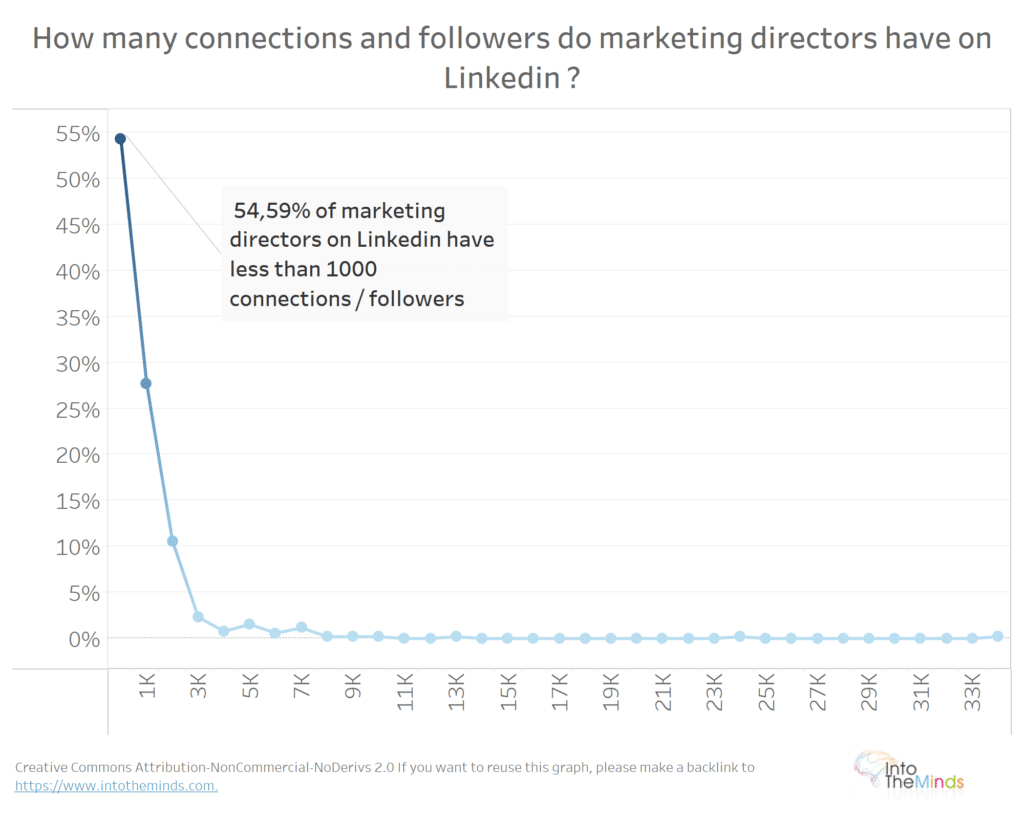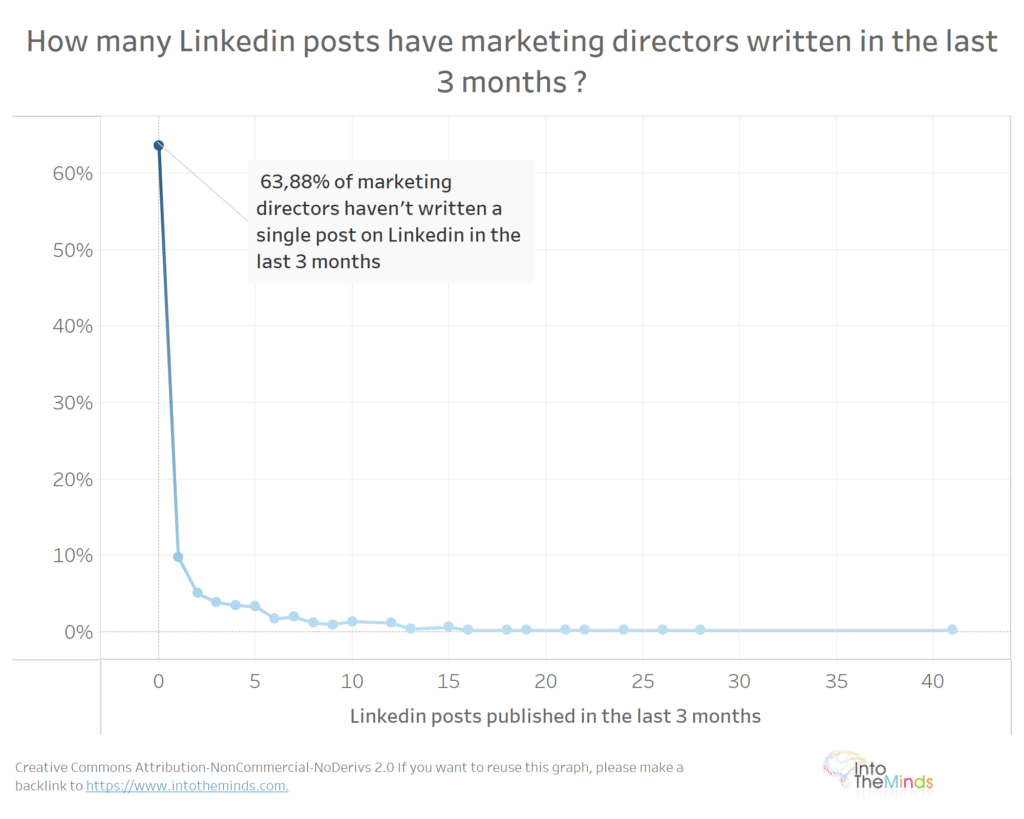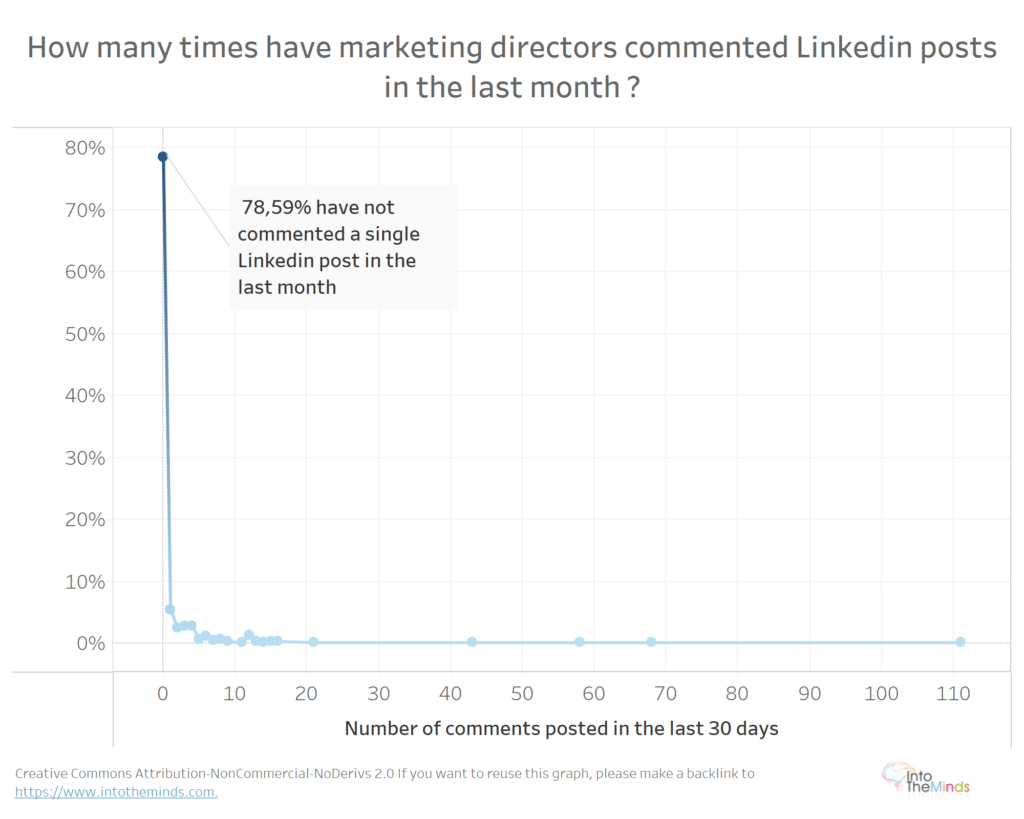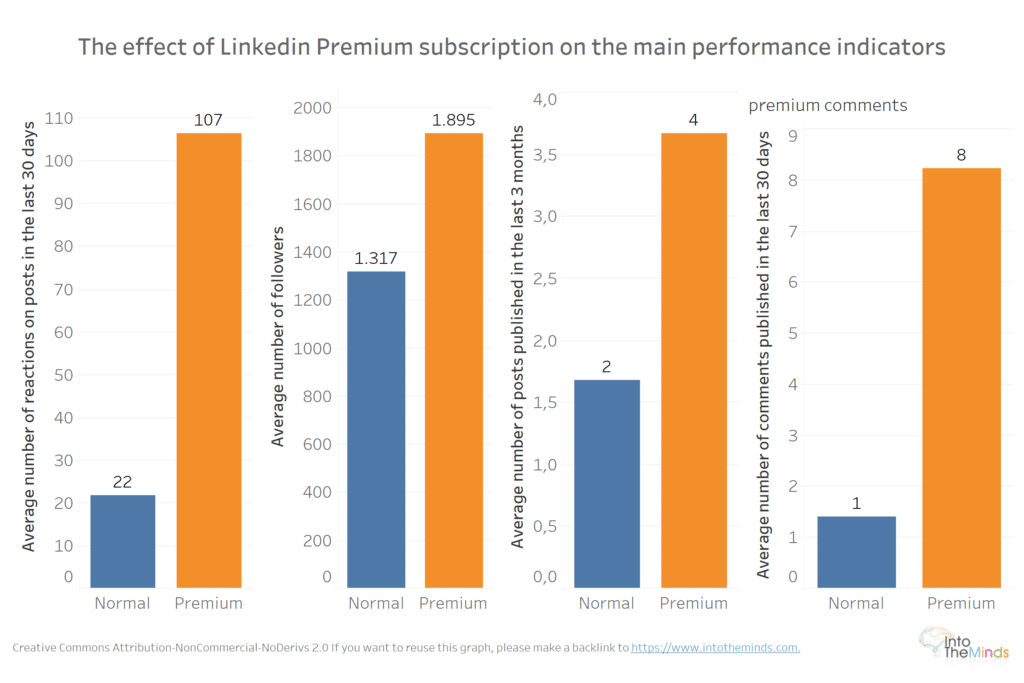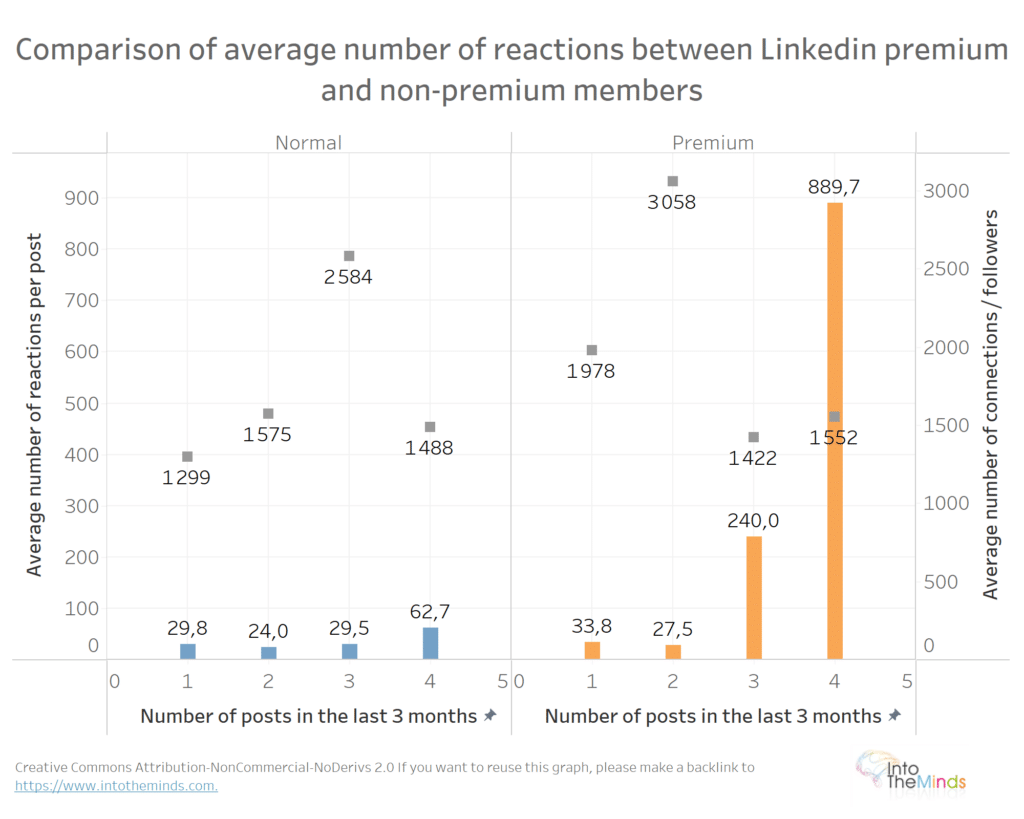LinkedIn has become an essential strategic tool, and every marketing manager needs to be on it. However, my research on 520 marketing managers in Europe shows that these professionals are far from being examples. In the end, they could be more active, their networks are mostly limited in size, and they don’t stand out from the rest of the LinkedIn membership. This research echoes the one I devoted to “growth managers” and completes my research on virality on LinkedIn.
Contact IntoTheMinds Marketing Research Agency
Key figures
- 23% of marketing managers have fewer than 5000 connections/followers
- 59% of marketing managers have fewer than 1000 connections/followers
- 64% of marketing managers on LinkedIn have not published anything in the last 3 months
- 89% of marketing managers have published less than 5 times on LinkedIn in the last 3 months
- 85% of marketing managers have a LinkedIn premium account
- premium subscribers have 43.89% more connections and subscribers than non-premiums
- premium account holders have an average of 387% more reactions to their posts
- LinkedIn Premium subscribers post 4x more and comment 8x more than other users.
To conduct this research, I analyzed the profiles of 520 marketing managers in Europe and manually recorded the number of:
- connections/followers
- posts written in the last 3 months
- comments written in the last 30 days
- reactions to posts published in the last 30 days
I also indicated whether the person had a premium account, as well as their location and gender.
More than half of the marketing managers have fewer than 1000 connections
Marketing managers should be networking champions and have an extensive LinkedIn network. Not so. 55% of marketing managers have less than 1000 connections/followers. This figure is close to the one I found in other research on a much larger sample: 50% of users had fewer than 1374 connections.
To compare further, 84.23% of marketing managers have fewer than 5000 connections/followers on LinkedIn. It was 81% of the overall LinkedIn user population.
How active are marketing managers on LinkedIn?
Let’s move on to the essence of LinkedIn: content. Again, the statistics show that marketing managers are LinkedIn users like others: they publish little. Almost 64% had not posted anything on the social network in the last 3 months. This doesn’t surprise me, as I’ve often said that only 1% of Internet users create content, while the 99% are content to consume it.
Does this mean marketing managers are doing better than the average Internet user? Not necessarily. The definition of a “post” in LinkedIn terminology includes shares, even without adding a single letter. But this practice is widespread on LinkedIn.
I couldn’t distinguish based on the post’s content, but 80-90% of marketing managers haven’t written a LinkedIn post in the last 3 months.
If our marketing managers can’t find the inspiration to write LinkedIn posts themselves, they may have a little more to comment on other contributors’ posts. Unfortunately, the answer is no. 78.6% of marketing managers haven’t commented on anything in the last 30 days. It makes you wonder whether they come to LinkedIn to at least look at what’s happening. I have my doubts.
The strange “Premium” effect
Only 8.85% of users in the sample had a LinkedIn Premium account. The differences between holders and non-holders of this type of account are remarkable, so much so that it makes me wonder whether LinkedIn’s algorithm tends to favor paying users (even though LinkedIn claims it doesn’t).
As you can see from the graph below, all metrics are significantly better when the LinkedIn user has a premium account.
First, Premium subscribers receive around 5 times more reactions to their posts than non-subscribers. They also have 44% more connections (1,895 versus 1,317 for non-premium users).
However, we must be wary of jumping to conclusions about causality. It’s simply a correlation that the habits of Premium subscribers can explain. We can see that Premium subscribers have posted an average of 4 times as many posts over the last 3 months as non-premium subscribers and 8 times as many comments.
There’s a virtuous circle here. The more active you are (posts, comments), the more likely you are to reap the rewards of this increased visibility (more connections, more reactions).
The question remains, however, as to why Premium subscribers show this increased activity. Were they already highly active before subscribing to the Premium offer? Or is the Premium package purchase encouraging them to be more active to make their subscription profitable?
It’s impossible to say with such a small dataset. But I did find some things to consider.
In the graph above, I’ve compared premium and non-premium users whose activity was similar. Over the observation period (3 months), they published the same number of posts (1, 2, 3, or 4). I also indicated by a gray square the average number of connections for the accounts in question because, of course, the “reach” of a post also depends on the size of the network. This was the most crucial factor in my research on virality.
We can see that premium members garner more reactions on average for the same number of posts. But you must be careful not to make a mistake. On the one hand, I need more premium members in the dataset to draw any robust conclusions. On the other hand, many other factors can impact the number of reactions to a post (the subject, the way it’s written, the moment it’s put online). In short, it’s impossible to draw definitive conclusions.

Conclusion
This short research focuses on the activity of marketing managers on LinkedIn. The nature of this social network makes it particularly suitable for marketing professionals, who should make a point of being present. It’s a question of “personal branding,” even more important when Google seeks to prioritize content written by people with authority on a subject.
And yet, we must admit that these marketers don’t necessarily set a good example. Their activity is limited (whether in terms of posts or comments), and the size of their network is comparable to that of an average user. Nothing sets them apart from the general population.
Only premium account holders stand out from the crowd. They have a much higher level of activity and better performance indicators. But it’s impossible at this stage to determine the cause. The hypothesis is that these people make a specific use of LinkedIn that justifies their subscription to the premium offer. In other words, the premium offer is a marker of an activity that already stands out from the crowd and justifies the greater number of reactions and the larger size of their network.
Posted in Data & IT.
